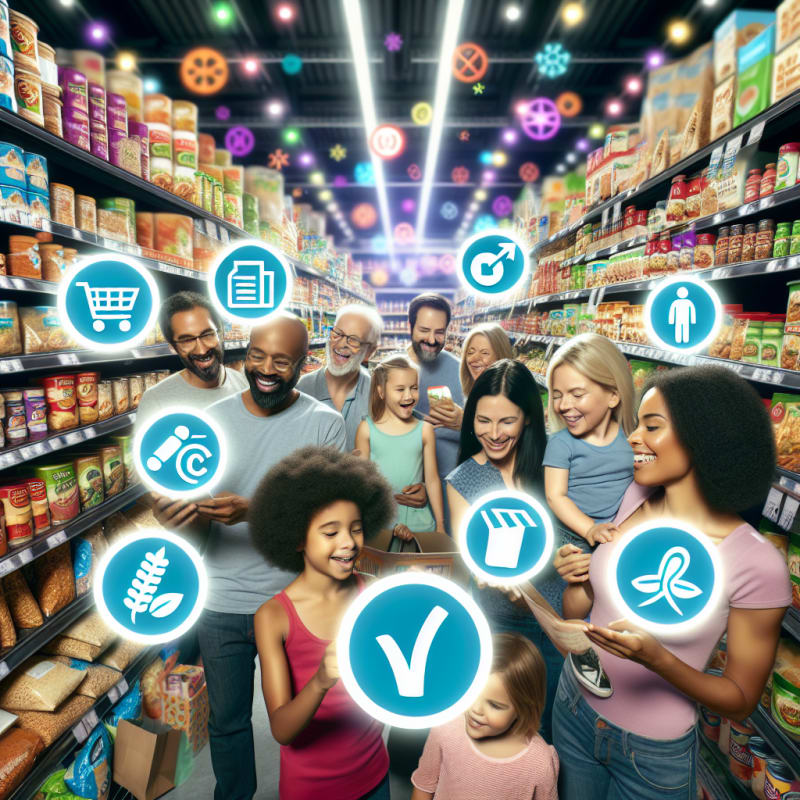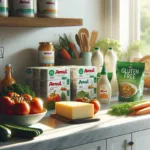How To Scan Food Labels For Allergens: A Parent’s Guide To Safe Shopping
Confessions of a worried parent: why scanning food labels for allergens changed everything for my family—and how it can help you too.
My Wake-Up Call: When Pasta Night Turned Scary
I’ll never forget the night my son, Ethan, broke out in hives after a simple bowl of pasta. We’d read the label—at least, we thought we had. But tucked away in tiny print was a warning: “May contain traces of egg.” That’s all it took. As I rushed him to the ER, I realized I needed to learn how to scan food labels for allergens—for real, not just a quick glance in the grocery aisle.
If you’re a parent, caregiver, or anyone with food sensitivities in your life, you know this anxiety all too well. But what if you could turn that fear into confidence? Here’s what I learned, and how you can protect your family—without spending hours decoding every ingredient list.
Why Food Label Scanning Matters: The Science & The Stakes
Food allergies are on the rise, affecting up to 10% of children and adults worldwide (PubMed). Even trace amounts of allergens can trigger severe reactions, making accurate label reading a life-saving skill. But food labels aren’t always clear or consistent—especially when you’re juggling U.S. and European products.
- Hidden allergens can appear under unfamiliar names (e.g., “casein” for milk, “albumin” for egg).
- Cross-contamination warnings (“may contain,” “processed in a facility with…”) are voluntary in some regions.
- Ingredient lists can change without notice, as manufacturers reformulate products (FDA).
According to the European Food Safety Authority (EFSA), even small errors in labeling can have serious consequences for allergic consumers.
Labeling Laws: U.S. vs. EU—What You Need To Know
| Region | Required Allergen Disclosure | Governing Authority |
|---|---|---|
| United States | Top 9 allergens must be clearly listed (e.g., milk, eggs, peanuts, tree nuts, fish, shellfish, wheat, soy, sesame) | FDA (source) |
| European Union | 14 allergens must be highlighted (e.g., celery, mustard, lupin, in addition to U.S. list) | EFSA (source) |
In the U.S., the Food Allergen Labeling and Consumer Protection Act (FALCPA) requires clear labeling of the top nine allergens. In the EU, the Food Information to Consumers (FIC) Regulation mandates the disclosure of 14 allergens, often in bold or contrasting type.
But here’s the catch: Precautionary allergen labeling (like “may contain”) is voluntary in both regions. This means you can’t always rely on these warnings—making a careful scan essential.
Recent News: The New York Times recently reported on confusion over new sesame labeling laws in the U.S., while BBC News highlighted EU efforts to tighten allergen disclosure rules after several high-profile incidents.
How To Scan Food Labels For Allergens: Step-By-Step
-
Identify the allergen list.
Look for the “Contains” statement, usually below the ingredient list. In the U.S., this will name any of the top 9 allergens. In the EU, allergens are often bolded in the ingredient list. -
Read the full ingredient list.
Don’t stop at the “Contains” line. Some allergens hide under scientific or unfamiliar names (e.g., “whey” = milk, “lecithin” = soy). -
Check for cross-contamination warnings.
Look for statements like “may contain traces of…” or “produced in a facility with…” These are especially important for highly sensitive individuals. -
Compare with your allergen list.
Keep a list of all allergens you’re avoiding—especially if you’re shopping for multiple sensitivities. -
Use a scanner app for backup.
Technology can help you double-check ingredients and find hidden risks.
Pro Tip: Ingredient lists can change at any time. Always check the label—even if you’ve bought the product before (PubMed).
Food Scan Genius: Scan, Shop, and Breathe Easier
After our pasta scare, I discovered Food Scan Genius—an app that lets you scan any barcode and instantly checks for allergens, dietary preferences (gluten-free, vegan, kosher), and even ingredient changes. It’s become my secret weapon in the grocery aisle.
- Scan any packaged food—the app reads the label and flags allergens instantly.
- Personalize your profile—set your family’s allergies and dietary needs.
- Get real-time alerts—if an ingredient changes or a new allergen is detected, you’ll know before you buy.
- Works for U.S. and EU products—adapts to local labeling laws and languages.
User Testimonial:
“Food Scan Genius saved my daughter from a dangerous nut exposure. I scanned her favorite snack—turns out the recipe had changed! I tell every parent: download the app before your next shopping trip.” — Maria L., Berlin
Try Food Scan Genius now—it’s free to install, and gives you peace of mind in every aisle.
Common Allergen Names: What To Watch For
| Allergen | May Also Appear As |
|---|---|
| Milk | Casein, whey, lactose, ghee, curds |
| Egg | Albumin, globulin, livetin, ovomucoid |
| Peanut | Arachis oil, groundnut, beer nuts |
| Tree Nut | Almond, walnut, pecan, hazelnut, cashew, pistachio |
| Wheat | Semolina, durum, farina, spelt, triticale |
| Soy | Lecithin, edamame, miso, natto, tofu |
| Fish/Shellfish | Surimi, anchovy, crab, lobster, shrimp, mollusk |
| Sesame (US/EU) | Sesamol, tahini, gomasio |
Tip: When in doubt, scan the product or contact the manufacturer directly.
Q&A: Your Top Food Label Scanning Questions Answered
Q: Are “may contain” warnings required by law?
A: No. In both the U.S. (FDA) and EU (EFSA), these warnings are voluntary. Always read the full ingredient list and scan when possible.
Q: What if the label is in a language I don’t understand?
A: Many scanner apps, including Food Scan Genius, can translate ingredient lists or flag allergens based on your profile.
Q: How often should I re-check my favorite products?
A: Every time you shop. Recipes and suppliers change frequently—always scan the barcode or read the label.
Q: Can I trust imported foods to follow local allergen laws?
A: Not always. Imported products may follow their country’s rules, which can differ from your own. Use scanner apps and check for local re-labeling.
Resources & References
Conclusion: From Fear To Freedom—Scan Smart, Shop Safe
That night in the ER changed how I shop forever. But it also gave me a mission: to help other parents, caregivers, and food-sensitive shoppers feel safe and empowered. When you know how to scan food labels for allergens—and use smart tools like Food Scan Genius—you can protect your loved ones and enjoy food again.
Don’t wait for a scary moment. Install a scanner app, learn your labels, and shop with confidence. Your peace of mind is worth it.
Frequently Asked Questions
- How do I scan food labels for allergens? Use a barcode scanner app like Food Scan Genius, read the ingredient list, check for allergen statements, and compare with your allergy list.
- Are food allergen labeling laws the same in the US and EU? No. The US requires disclosure of 9 allergens; the EU requires 14, with some differences in labeling style and language.
- Can apps help with dietary preferences (e.g., vegan, kosher)? Yes. Food Scan Genius and similar apps can filter products by dietary needs as well as allergens.





